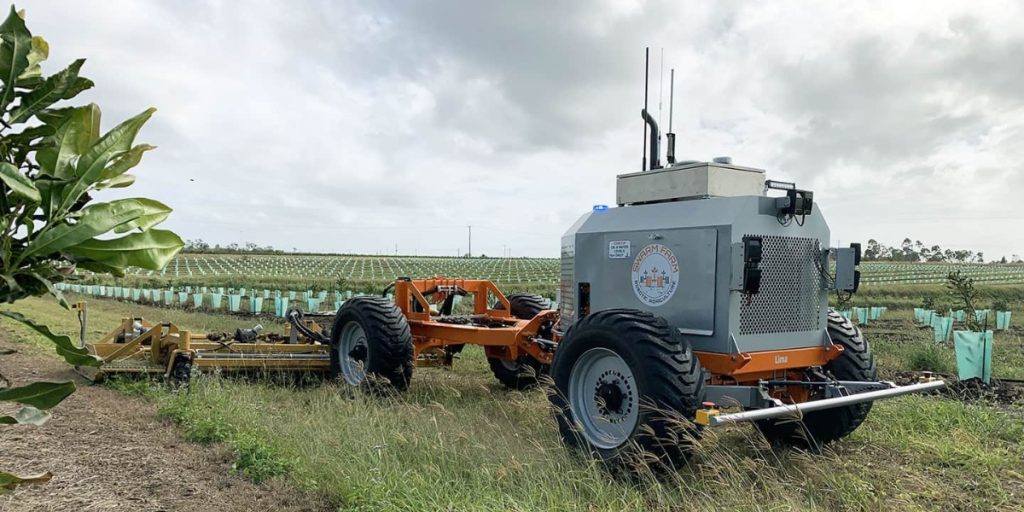Grain Automate – a five-year initiative led by the Grains Research and Development Corporation (GRDC), to accelerate the adoption of machine automation and digital intelligence technologies in Australian grain systems – will be on show next month in Gunnedah.
The Society of Precision Agriculture Australia (SPAA) has this year partnered with GRDC to lead AgQuip’s Grain Automate Alley exhibition.
Project Extension Officer for SPAA Domenic Coscia said Grain Alley will be an opportunity for local grain growers wanting to use variable rate technology, start on-farm trials and start setting up their digital farm ready for vehicle automation.
Mr Coscia said the Alley will give farmers a first-hand chance to learn about automation and autonomous machines, ask questions directly to agtech providers and partners and build confidence in adopting new tools and systems.
“The Grain Automate Alley is a practical way to help farmers see what’s out there, ask the hard questions, and start thinking about how this tech might fit their own systems,” he said.
“The GRDC will invest $35 million in Grain Automate and SPAA plays a significant role in part of the program; Paving the Way for Autonomy, which focuses on building grower knowledge, skills and confidence to use autonomous ag machinery.
“We deliver extension and education activities nationwide, including workshops, online resources, peer-to-peer engagement, podcasts, evaluation tools and the Grain Automate Hub website.”
SPAA is a national, not-for-profit grower group advocating for the adoption and extension of precision agriculture (PA) systems in Australia.
The organisation works across a wide range of primary industries, including grains, sugar, cotton, dairy, livestock, and horticulture, and collaborates with grower groups, researchers, universities, consultants, and government agencies to explore and extend the use of agtech on farms.
Mr Coscia said SPAA’s members include Australian farmers, agronomists, consultants, researchers, and academics invested in improving farm performance through digital tools, data, and decision support.
“Precision agriculture is a data-driven approach to farming.
“It involves collecting, processing, and analysing data—then combining it with other information to make smarter decisions that improve efficiency, productivity, profitability, and sustainability.
“Precision agriculture is about using data and technology to make more informed decisions—whether that’s how much to spray, when to plant, or what machines to invest in.”
One of the technology businesses to have partnered with SPAA is SwarmFarm Robotics.
SwarmFarm Chief Executive Officer Andrew Bate said his company’s machines are empowering farmers with modern technology that can deploy better farming methods and field practices to revolutionise food production.
“Our robots are transforming farming systems from the ground up, with a delivery platform to introduce new farming methods and techniques that are only possible onboard a robot.
“We are one of the few companies worldwide with real robots, already working on farms.
“SwarmFarm robots are not simply a driverless tractor that automates existing field operations, we believe robots are the obvious progression after the tractor.
“They are lightweight, efficient, and autonomous machines loaded with technology that allows new methods of farming not possible on the back of a tractor.
“Capable of operating at optimal speed and whenever the conditions are suitable for the specific operation, SwarmBots can work on their own or co-operatively as a ‘swarm’ of units across the landscape.”
SwarmFarm began in 2012, partnering with two universities to develop an autonomous RTV prototype.

Mr Bate said today his team has successfully deployed autonomous robots to farmers, who have used them to commercially farm over 5.1 million acres, operating 220,000 hours and reducing pesticide inputs by an estimated 4 million litres.
“Australian farmers are already good at technology, but we need to become more profitable through better use of technology and help plan for family succession,” he said.
“There is enormous demand for autonomy in agriculture, but most solutions have very minimal potential.
“We believe farmers want a technology system to address their local issues, using a farm-centric system that leaves the lowest possible footprint on their fields, helping them do more with less.
“We also believe there is no longer such a severe distinction between farmers and technologists, but rather a new breed of farmer-technologists.
“Ag tech is hugely exciting and it’s a great time to be in farming.”
Read all the way through to the end of the story? So did lots of other people. Advertise with New England Times to reach New England locals who are interested and engaged. Find out more here.

